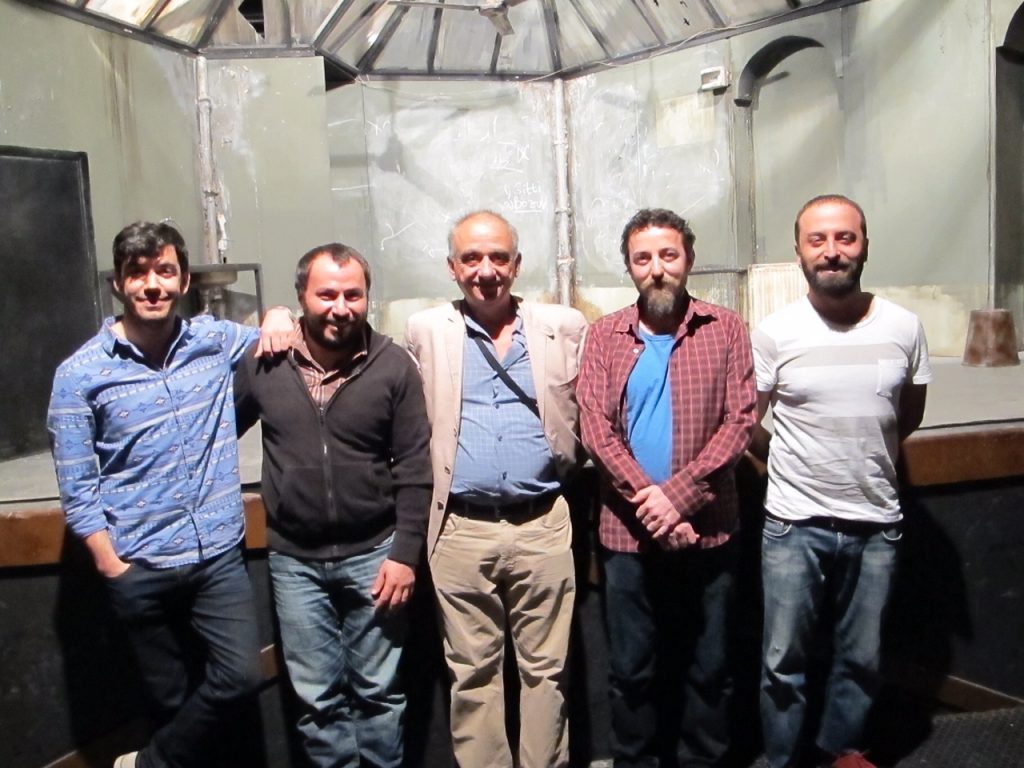
When Canadian Theatre was born in the late sixties, it had, like the decade, a left-wing and nationalist temperament. There was no funding for the arts at the time, and there were a total of six Canadian plays in existence, so if you were going to found a theatre company dedicated to the production of Canadian, political plays, you had to be obstreperous — which might be an apt description of the era’s artistic directors, and theatre companies like TWP, Passe Muraille, Factory Theatre, Globe Theatre (Regina). There was one Canadian playwright — George Ryga — so, not surprisingly, a lot of the early plays were collective creations. And the target was a general audience, not theatre artists, of which there were too few to fill a Volkswagen van.
That’s the theatre world I entered when, in 1976, I started working with Ottawa’s Great Canadian Theatre Company. Founded a year earlier (we were a bit late to the party), GCTC was dedicated to producing Canadian and political plays. “Canadian” meant written by Canadians; and “political” meant, to us, political parties, history, social issues. It was pretty broad, but not borderless; “the personal is political” and “everything is political” were not GCTC slogans.
In the beginning GCTC produced plays from Canada’s small repertoire of political plays (Ryga’s The Ecstasy of Rita Joe; Carol Bolt’s Buffalo Jump; The Mummers Troupe’s Company Town; Sharon Pollack’s Komagata Maru Incident …) and when these ran out, the Company commissioned plays or its members wrote collectively or individually. Slowly, GCTC’s work was being recognized, especially after a 1982 tour of Sandinista!, a collective creation about the Nicaraguan revolution.
I was made resident playwright about then, and my annual contribution was always explicitly political: Zero Hour (the CIA in Central America), Cheap Thrills (poverty), Learning to Live with Personal Growth (poverty again), 1997 (the future of work).
It wasn’t long, however, before the theatre world passed us by.
In those early years, GCTC was a “collective”: everyone was paid the same, and all full-time staff were members of Board. We had an artistic director, but also an “artistic direction committee,” which voted on the season. These structures were seen as more or less important by various members at various times; but we all understood — well, let me clarify — then artistic director Patrick McDonald and I understood that what made GCTC political was not what happened offstage, but in the content of the plays. We were willing to compromise on everything but that.
Increasingly, however, out there is the broader theatre world, “political” had come or was coming to mean other things: “formal experimentation”; or the manner of creation, e.g., collective creation or improvisation; or the participation of “target groups” — e.g., women, aboriginals, visible minorities. This redefinition of political was enforced, in the case of target groups (which I support), by arts funding bodies; and in the case of formal experimentation and manner of creation, by artists on juries.
The explicit political content that GCTC specialized in back then has been largely abandoned. Such plays still get written of course, but they’re seldom produced. Consider plays like Michael Healey’s Proud (2012), George F. Walker’s Dead Metaphor (2013), Tommy Taylor’s You Should Have Stayed Home (2010), my own play Facts (2010), or The Public Servant (2015), a collective creation from Common Boots Theatre (Artistic Director, Jennifer Brewin; she and I are married). All – especially mine — are intelligent, funny and provocative plays on important political/social subjects. All these plays have been successful with audiences and reviewers, but not with Canada’s artistic directors.

Facts’ domestic journey is not atypical: despite international success (it toured Palestine and Israel in Arabic; ran for a month in London, U.K., to sold out houses and rave reviews; and I believe is still running in rep in Istanbul in Turkish), in Canada, after a successful premiere at GCTC, it’s been self-produced and produced by United Players, a “community theatre” in Vancouver. Reversing centuries of cliché, amateur theatre companies are now more adventurous than our professional theatres.
The Public Servant was a major hit (100 per cent attendance) at GCTC and also, recently, in Toronto in a Common Boots/Nightwood coproduction; but no one else has picked it up. What is going on in the brains of artistic directors in Canada’s capital cities I can’t imagine.
There are exceptions. Joan MacLeod’s plays get produced and, as Robert Crew writes, “few Canadian playwrights are as acutely tuned to contemporary issues” (Toronto Star, November 14, 2013). The Valley, inspired by the RCMP killing of Robert Dziekanski, has been produced recently by Alberta Theatre Projects, the Tarragon, the Belfry, Prairie Theatre Exchange and the Arts Club. Gracie, about polygamy in B.C., premieres at the Belfry in January.
Many will claim that financial exigency demands light entertainment. Certainly, the first reflex of theatre boards and artistic directors when facing financial difficulty is ever lighter entertainment. However, the near absence of political theatre from the stages of Canada’s midsize and large professional theatres is not due to the tastes of audiences, but to the tastes of artistic directors and the Boards that hire them. (Our small companies, meanwhile, busy themselves exploring new forms.)
American author Finley Peter Dunne wrote that the newspapers “comfort the afflicted and afflict the comfortable.” I think that would be a good goal for theatres. It’s a challenge bringing theatre to the afflicted, of course — and we should do more of that.
It’s less of a challenge to afflict the comfortable. In my experience, audiences want to be challenged. They want to hear provocative and strange and uncomfortable ideas, and to be stimulated to think in new ways. They want smart, funny, dramatic plays about the world they live in. They want theatre that’s about something.
But instead, our theatres bring comfort to the comfortable — that is, they provide light entertainment for the well off. And for that, theatres get government subsidy derived from taxation of the comfortable and the afflicted, both.
I think we have to do better.









